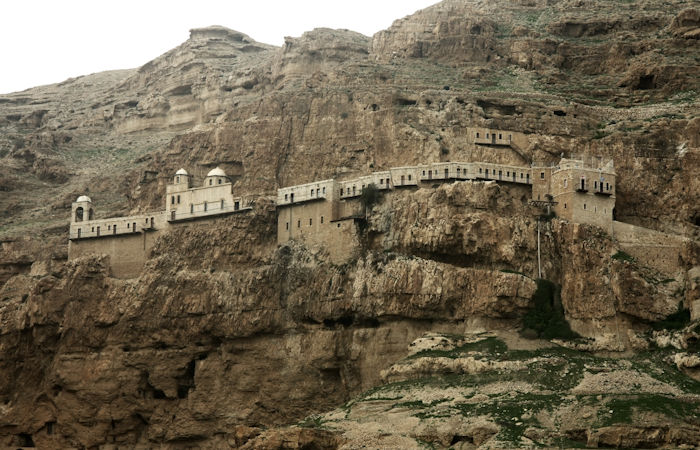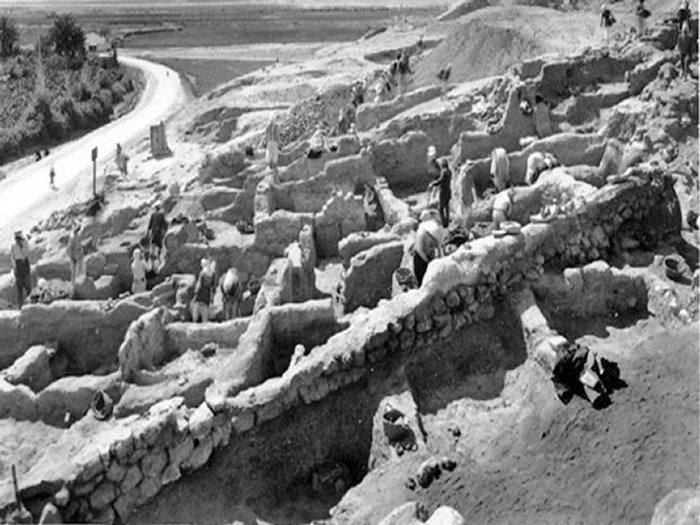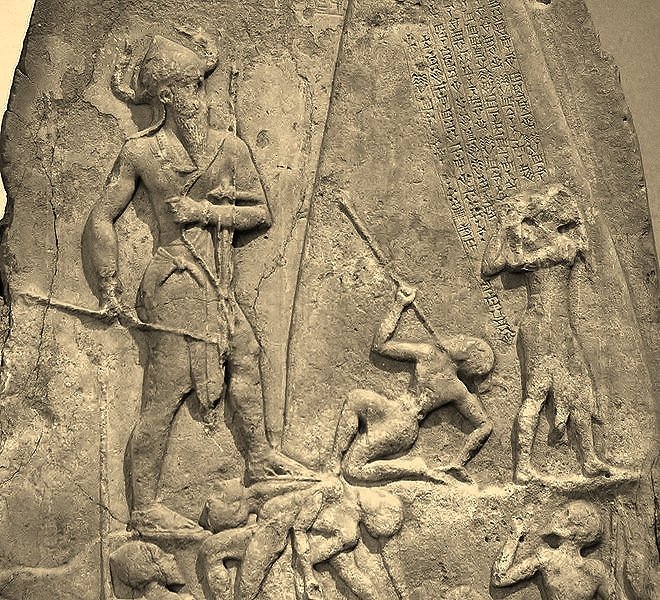Ancient Jericho – City Of Giants And Home Of The Mighty Gibborim
Ellen Lloyd - AncientPages.com - Jericho is one of the oldest and most important ancient cities of all time. Modern excavations confirm the city’s great antiquity. It’s a city that is sacred and a place where many bloody battles were fought.
In ancient times, Jericho was known as the City of Giants, because it was inhabited by giants known as Gibborim.
Mount of Temptation of Jesus Christ near Jericho. Credit: Adobe Stock - Mikhail Semenov
Gibborim Giants Inhabited Ancient Jericho According To Joshua
The “Gibborim”, “heroes of old, men of renown”, who are mentioned in Genesis 6, were not as tall and powerful as the Nephilim, but they were nevertheless a dangerous warrior race.
According to the Bible, those who descended to Earth and mated with the women of Earth were the “fallen angels”, (the Watchers), a group of 200 high-ranked divine beings.
The giants referred to in Genesis are thus the result of interbreeding between humans and fallen angels.
The Nephilim procreated not only among themselves but created also offspring with the homo sapiens. The offspring of the Nephilim were giants known as the “Gibborim”.
Joshua, who became the leader of the Israelite tribes after the death of Moses mentions the Gibborim in his chronicles.
The walls of Jericho. Image credit - Biblical Archaeology
The story of Jericho is told in Joshua 6:1-27. It’s from Joshua we learn about the true inhabitants of ancient Jericho.
In Joshua 6:2 it is written how the Lord speaks to Joshua saying:
“And the Lord said unto Joshua, See, I have given into thine hand Jericho, and the king thereof, and the mighty men of valour.” (Joshua 6:2)
According to Biblical scholars, “the mighty men” is a reference to the Gibborim. This phrasing is derived from the same Hebrew word that Moses used in Genesis 6:4 to signify the giants.
Victory Stele of Naram-Sin celebrates the triumph of King Naram-Sin over a mountain people, the Lullubi. King Naram-Sin appears to be exceptionally tall. Credit: Public Domain
“There were giants in the earth in those days; and also after that, when the sons of God came in unto the daughters of men, and they bare children to them, the same became mighty men which were of old, men of renown.” (Genesis 6:4)
This means that Jericho was inhabited by giants known as Gibborim. Joshua tells that when the walls of Jericho fell, he and the people of Israel met giants in combat.
Did The Gibborim Survive?
According to Robert C. Newman, Professor of New Testament at the Biblical Theological Seminary of Hatfield, Pennsylvania, “regarding the "Nephilim", the rabbis apparently used Num 13:33, where the term is associated with the Anakim at the time of the Exodus.
With this hint and the aid of Deut. 2:10-11, 20-21, they obtained five other names for the Nephilim by which to describe them using etymological word-play.
Two of these are rather supernatural sounding: "Gibborim: ... the marrow of each one's thigh bone was eighteen cubits long"; "Anakim: ... their necks reached the globe of the sun." The term "Nephilim" is understood as teaching that "they hurled (haphilu) the world down, themselves fell (nephelu) from the world, and filled the world with abortions (nephilim) through their immorality."
As Newman points out, several subclasses of Nephilim appear to have existed before the Flood, and also afterward.
One of those that existed before the Flood were the "Gibborim", the "mighty men of old".
Several Biblical stories also tell about the Rephaim, another group of giants described as “a mighty people with tall stature who lived in Canaan.” So, there is every reason to consider the Gibborim did inhabit Jericho in ancient times.
Being mixed-bred, the Gibborim were superior in almost every way to homo sapiens.
In the scriptures, it is said that the Hebrews set fire to the whole city of Jericho and none they found inside alive. They burned everything around the city of Jericho and they tore down structures that escaped the fire.
Did all the Gibborim die? It would seem so, but there are also some sources that state a few Gibborim managed to escape. According to the Jewish Encyclopedia, those who survived were led by a certain Ifrikish ibn Kais to Africa. Having killed the king of that country they settled there. The Berbers are their descendants.
Another source, Procopius of Caesarea (500 – c. 554 AD), a prominent late antique scholar from Palaestina Prima wrote that these giants fled for their lives to Africa. They settled in Libya, spread across Africa and they reached as far as the Pillar of Hercules, two promontories at the eastern end of the Strait of Gibraltar.
Frankly, the fate of the Gibborim is quite a mystery...
Written by Ellen Lloyd – AncientPages.com
Copyright © AncientPages.com All rights reserved. This material may not be published, broadcast, rewritten or redistributed in whole or part without the express written permission of AncientPages.com
More From Ancient Pages
-
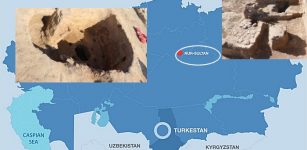 New Historical Finds Near Khoja Ahmed Yassawi Mausoleum In Turkestan – Uncovered
Archaeology | Aug 20, 2020
New Historical Finds Near Khoja Ahmed Yassawi Mausoleum In Turkestan – Uncovered
Archaeology | Aug 20, 2020 -
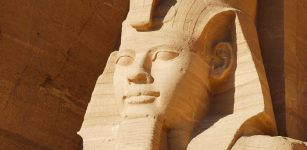 How Ramesses II Became The Greatest Pharaoh In Egypt
Featured Stories | Jun 6, 2021
How Ramesses II Became The Greatest Pharaoh In Egypt
Featured Stories | Jun 6, 2021 -
 Art Historians Solve Mystery Of Raphael’s Tomb By Reconstructing His Face
Archaeology | Aug 7, 2020
Art Historians Solve Mystery Of Raphael’s Tomb By Reconstructing His Face
Archaeology | Aug 7, 2020 -
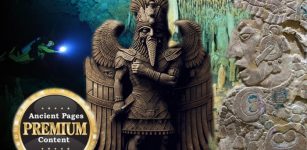 Evidence Of An Unknown Ancient Civilization In The Yucatan?
Featured Stories | Apr 6, 2024
Evidence Of An Unknown Ancient Civilization In The Yucatan?
Featured Stories | Apr 6, 2024 -
 Mysterious Hockomock Swamp – A Vortex To The Unknown In Massachusetts?
Featured Stories | Oct 9, 2019
Mysterious Hockomock Swamp – A Vortex To The Unknown In Massachusetts?
Featured Stories | Oct 9, 2019 -
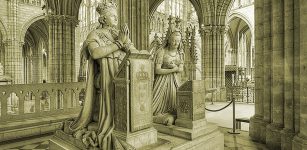 On This Day In History: King Louis XVI Of France Was Formally Arrested And Declared An Enemy Of The People – On August 13, 1792
News | Aug 13, 2016
On This Day In History: King Louis XVI Of France Was Formally Arrested And Declared An Enemy Of The People – On August 13, 1792
News | Aug 13, 2016 -
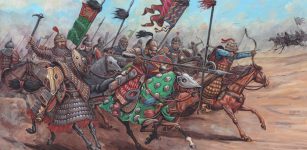 Mystery Of The Avars Who Conquered The Roman Empire Solved By Scientists
Civilizations | Apr 1, 2022
Mystery Of The Avars Who Conquered The Roman Empire Solved By Scientists
Civilizations | Apr 1, 2022 -
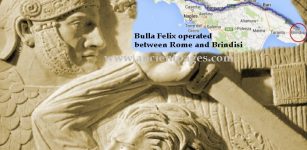 Bulla Felix: Legendary Italian Leader Of Outlaws Who Robbed The Rich And Gave To The Poor
Featured Stories | Mar 23, 2023
Bulla Felix: Legendary Italian Leader Of Outlaws Who Robbed The Rich And Gave To The Poor
Featured Stories | Mar 23, 2023 -
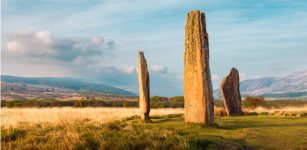 Complete Neolithic Cursus Discovered On Isle of Arran, Scotland
Archaeology | Sep 7, 2023
Complete Neolithic Cursus Discovered On Isle of Arran, Scotland
Archaeology | Sep 7, 2023 -
 Ancient Tomb Belonging To Princess Of Ancient Nomads Discovered In China
Archaeology | Dec 20, 2015
Ancient Tomb Belonging To Princess Of Ancient Nomads Discovered In China
Archaeology | Dec 20, 2015 -
 Varahamihira: Indian Sage And One Of The Greatest Minds Of All Time
Featured Stories | Sep 13, 2016
Varahamihira: Indian Sage And One Of The Greatest Minds Of All Time
Featured Stories | Sep 13, 2016 -
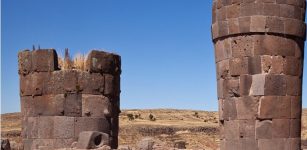 Huge, Cylindrical Pre-Incan Chullpas Of Sillustani, Peru Were Used As Graves For Colla Nobles
Civilizations | Mar 14, 2023
Huge, Cylindrical Pre-Incan Chullpas Of Sillustani, Peru Were Used As Graves For Colla Nobles
Civilizations | Mar 14, 2023 -
 Ancient Mesopotamian City Lagash Reveals More Archaeological Secrets
Archaeology | Jan 25, 2023
Ancient Mesopotamian City Lagash Reveals More Archaeological Secrets
Archaeology | Jan 25, 2023 -
 First AI-Based Method For Dating Archaeological Remains Developed By Researchers
Archaeology | Aug 23, 2022
First AI-Based Method For Dating Archaeological Remains Developed By Researchers
Archaeology | Aug 23, 2022 -
 First Genome-Wide Ancient Human DNA From Sudan Shines New Light On Nile Valley Past
Archaeology | Dec 20, 2021
First Genome-Wide Ancient Human DNA From Sudan Shines New Light On Nile Valley Past
Archaeology | Dec 20, 2021 -
 Ancient Calendar Predicted The Coronavirus And Other Disasters In 2020 – History Researcher Says
News | Mar 24, 2020
Ancient Calendar Predicted The Coronavirus And Other Disasters In 2020 – History Researcher Says
News | Mar 24, 2020 -
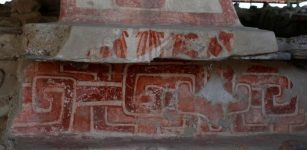 Teotihuacan’s Puzzling Red Glyphs Could Be Unknown Ancient Writing
Archaeology | Sep 22, 2020
Teotihuacan’s Puzzling Red Glyphs Could Be Unknown Ancient Writing
Archaeology | Sep 22, 2020 -
 Mask Of Shame: Worn In Ancient Times As Punishment For Gossiping
Ancient History Facts | Jan 5, 2017
Mask Of Shame: Worn In Ancient Times As Punishment For Gossiping
Ancient History Facts | Jan 5, 2017 -
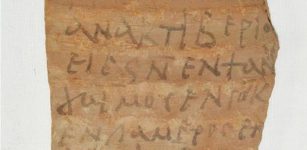 Rare Discovery Of More Than 18,000 Inscribed Pot Sherds Document Life In Ancient Egypt
Archaeology | Jan 31, 2022
Rare Discovery Of More Than 18,000 Inscribed Pot Sherds Document Life In Ancient Egypt
Archaeology | Jan 31, 2022 -
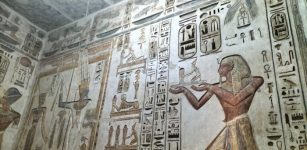 The Gold Compartment At Habu Temple Looks Magnificent After Restoration
Archaeology | Aug 20, 2022
The Gold Compartment At Habu Temple Looks Magnificent After Restoration
Archaeology | Aug 20, 2022

